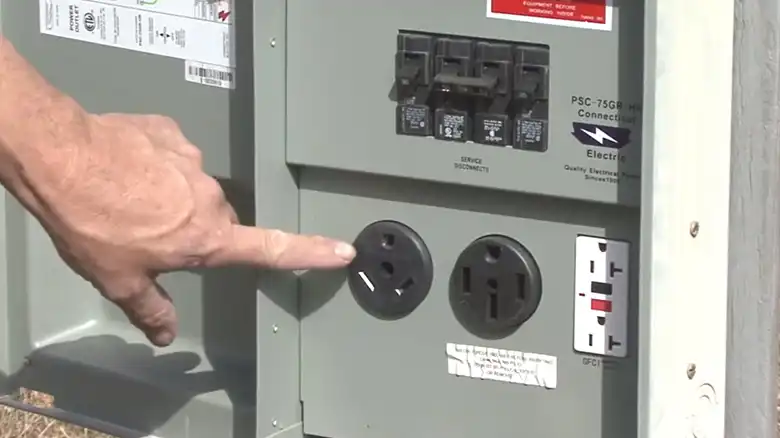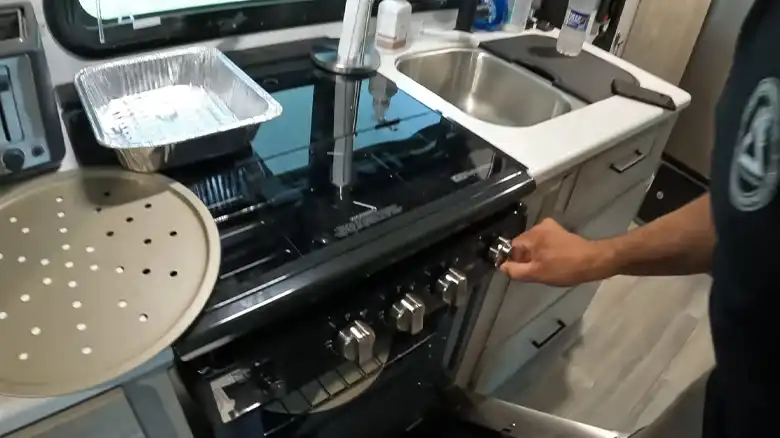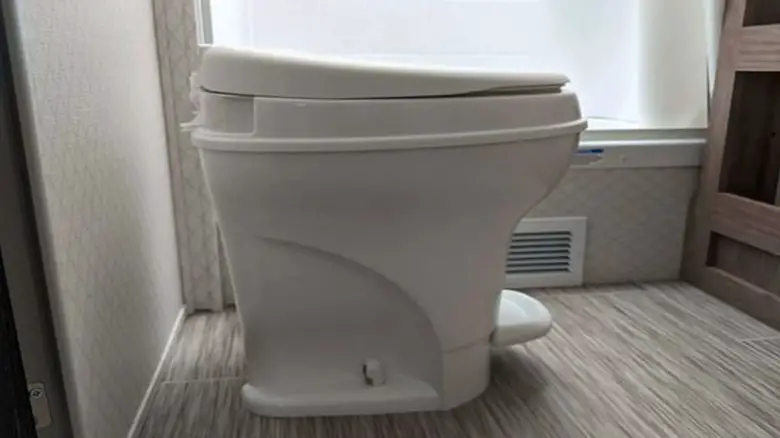If you’re an avid RVer or someone new to the world of recreational vehicles, you might have wondered, “Can I run my RV furnace on 110 volts?” The answer is both yes and no, depending on various factors.
In this comprehensive guide, we will delve into the possibilities, practicality, risks, and safety measures associated with running your RV furnace on 110 volts. We’ll also address some common questions in the FAQ section to ensure you have all the information you need.

Can You Run an RV Furnace on 110 Volts?
Running your RV furnace on 110 volts is possible, but it’s essential to understand the intricacies involved. Unlike some other appliances in your RV, such as the microwave or air conditioner, the furnace often operates on a different power source, typically 12 volts DC. However, with the right equipment and modifications, you can use 110-volt power to heat your RV. Let’s explore how to do it, the risks involved, and ways to mitigate those risks.
Potential Risks of Running an RV Furnace on 110 Volts
Running your RV furnace on 110 volts can pose several risks, and it’s crucial to be aware of them to ensure your safety and the safety of your RV. Here are some potential risks and how to avert them:
Overloading Your Electrical System: The increased power demand from the furnace may overload your RV’s electrical system, leading to blown fuses or circuit breakers tripping. To avert this risk, upgrade your electrical system and ensure it can handle the additional load.
Fire Hazards: Any modification or installation of electrical components can pose a fire hazard if not done correctly. It’s essential to hire a qualified technician to perform the installation to reduce the risk of electrical fires.
Excessive Power Consumption: Using a 110-volt furnace can significantly increase your power consumption, which might not be sustainable when boondocking or using a generator. Be mindful of your power usage to avoid running out of power prematurely.
Cost of Installation: Converting your RV furnace to run on 110 volts can be costly, considering the need for compatible components and professional installation. Ensure you have a budget in place before embarking on this project.
Voiding Manufacturer Warranty: Modifying your furnace may void the manufacturer’s warranty, so check the terms and conditions carefully. It’s important to understand the potential consequences before proceeding.
Steps to Convert Your RV Furnace to 110 Volts
Step 1: Verify Furnace Compatibility
The first step in running your RV furnace on 110 volts is to check if your furnace is compatible with this power source. Most RV furnaces are designed to work with 12-volt DC power. To convert your furnace to run on 110 volts, you may need to invest in a compatible 110-volt heating element or modify your existing furnace to accept the new power source.
Step 2: Upgrade the Electrical System
Running a furnace on 110 volts requires a reliable source of AC power. Ensure your RV’s electrical system can handle this load. You may need to upgrade your RV’s electrical system to accommodate the increased power demand. Consult with a professional electrician or RV technician for guidance on this step.
Step 3: Install a 110-Volt Heating Element
If your RV furnace is not originally designed for 110-volt operation, you’ll need to install a compatible heating element. This element will convert the 110-volt power to heat, which is then distributed throughout your RV. The installation process should be done by a qualified technician to ensure safety and functionality.
Step 4: Set the Thermostat Correctly
After successfully installing the 110-volt heating element, you’ll need to adjust the thermostat to your desired temperature. This is similar to using the furnace in its standard configuration.
Step 5: Monitor Power and Usage
Running your RV furnace on 110 volts will increase your power consumption. Keep an eye on your RV’s power supply to avoid overloading your electrical system or blowing fuses. Consider using a power monitor or surge protector to prevent electrical issues.
FAQ: Common Questions About Running an RV Furnace on 110 Volts
Can I convert my existing RV furnace to run on 110 volts?
Yes, you can convert your RV furnace to run on 110 volts, but it’s advisable to consult a professional technician to ensure a safe and effective conversion.
What are the advantages of running an RV furnace on 110 volts?
Running your furnace on 110 volts may provide more consistent heating and efficiency, especially when connected to shore power.
Can I run my RV furnace on 110 volts when boondocking?
While it is possible to run your furnace on 110 volts, it may not be the most practical choice when boondocking due to increased power consumption. In such cases, using an alternative heating source or conserving energy is often more advisable.
How much will it cost to convert my RV furnace to run on 110 volts?
The cost can vary significantly depending on your RV’s specific requirements and the components needed for the conversion. It’s best to obtain quotes from qualified technicians.
What safety precautions should I take when running an RV furnace on 110 volts?
Ensure that all electrical modifications and installations are performed by a professional. Regularly inspect your RV’s electrical system for signs of wear or damage, and use surge protectors to prevent electrical issues.
Will running an RV furnace on 110 volts affect my RV’s battery life?
If you are connected to shore power, running your furnace on 110 volts should not significantly affect your RV’s battery life. However, if you are using your RV’s battery as the power source, it will deplete the battery more quickly.
Final Words
Running your RV furnace on 110 volts is possible with the right modifications and precautions in place. It can provide more consistent heating and efficiency, especially when connected to shore power.
However, it’s essential to be aware of the associated risks, including electrical overloads, fire hazards, and increased power consumption. If you decide to undertake this conversion, consult with qualified technicians and regularly inspect your electrical system to ensure safe and efficient operation. Make an informed decision based on your specific needs and circumstances, and always prioritize safety when modifying your RV’s systems.


